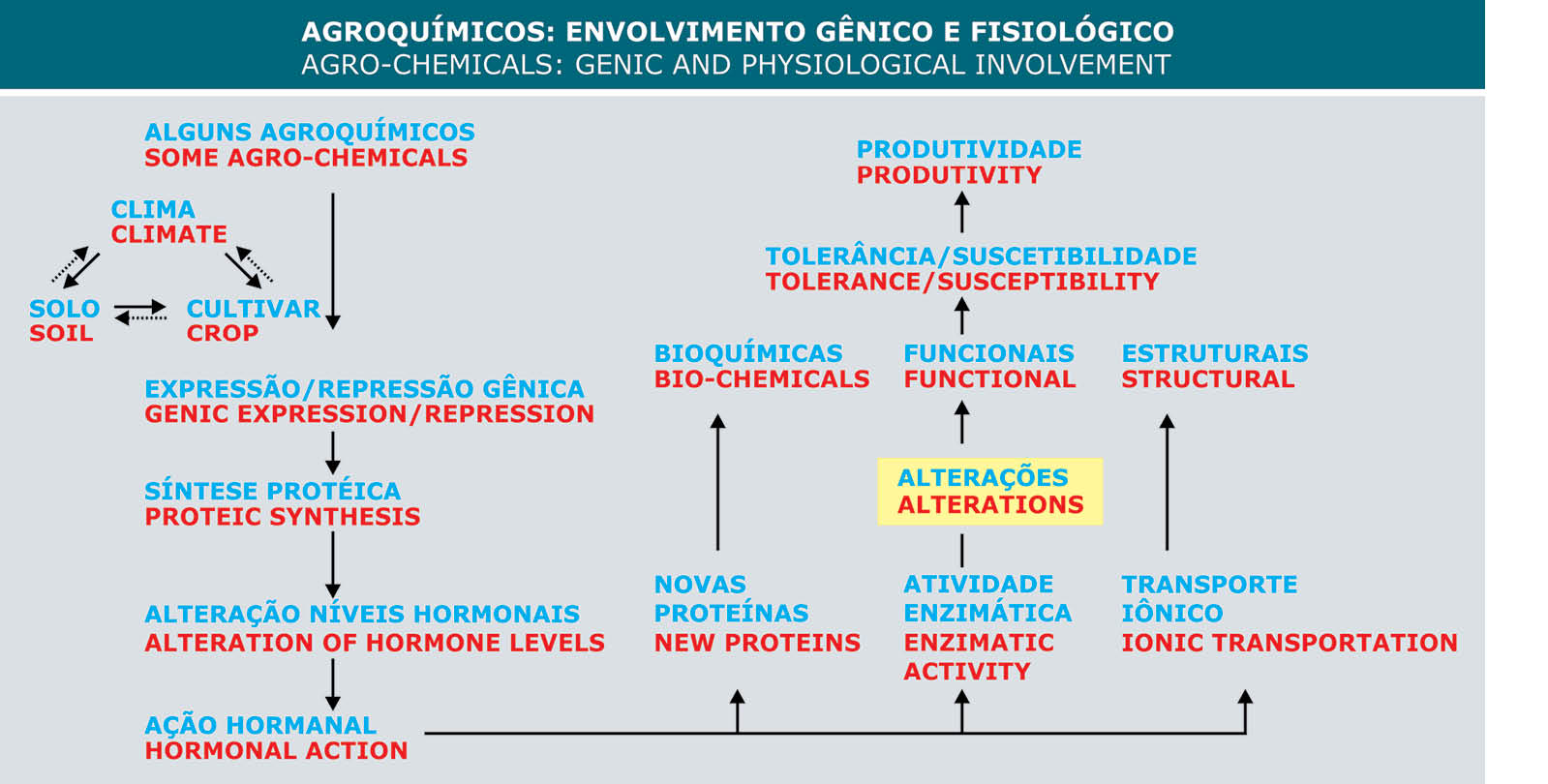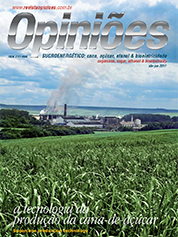Paulo Roberto de Camargo e Castro
Professor of Plant Physiology at Esalq-USP
Op-AA-28
Physiological and agro-chemical aspects of hormonal action in sugarcane
Apart from innumerous management processes capable of improving sugarcane performance and productivity, agro-chemicals with hormonal action have been important for the crop’s production systems, in the preservation of physiological characteristics, and for applying adequate techniques for its cultivation.
The planting depth of sugarcane stalks varying from 2.5 to 5.0 cm has proven ideal for better emergence of plantlets. One fact not always taken into consideration refers to the stalk bud angle, which must be between 0° and 45°, for better emergence. Some studies showed that amino acid arginin can increment sugarcane’s initial development and performance.
The application of the bio-activator Actara (tiametoxam) on the stalks and after the cutting of the sugarcane stumps, apart from protecting against early pests, allows incrementing sugarcane’s sturdiness. To keep soil conditions consistent with field capacity avoids damage to the root system caused by too little or too much water in the soil.
The need to make nutrients available for the sugarcane crop is evident, from the time of emergence until it is more developed, whereas under tropical conditions, plants react efficiently to nutrients, mainly with total insolation. Solar radiation and high tropical temperatures favor sugarcane’s development and productivity, the C4 plant, adapted to these conditions.
The number of stalks produced changes according to the variety, but may reach 20 stalks per square meter 6 months after planting, decreasing to 12 stalks after 12 months, due to demise caused by self-shading. Some morphological characteristics of sugarcane may be associated with the crop’s high productivity.
 After emergence, we deem that the formation of numerous vertical tillers allows for higher penetration of light in the stump and better leaf development. The bio-regulator Ethrel (ethephon) improves sugarcane tillering, and can be mainly applied on varieties that produce few tillers.
After emergence, we deem that the formation of numerous vertical tillers allows for higher penetration of light in the stump and better leaf development. The bio-regulator Ethrel (ethephon) improves sugarcane tillering, and can be mainly applied on varieties that produce few tillers.
Varieties with thick, short and straight leaves also allow for better illumination of the canopy and higher outputs. Sugarcane stalks must be sturdy to preclude laying and they must have high sinking power for sugar, resulting in high productivity.
Some sugarcane varieties significantly diminish internode length under low temperature conditions in Winter, whereas they can be sprayed with Pro-Gibb (gibberellins) beginning in May, to maintain growth and sinking power, so as to increase productivity.
Varieties with low flowering are preferred, because the reproductive organs will compete and attract sugars that will not become available in the internodes, whereas flowering increases the percentage of parenchyma without broth (styrofoam). We can inhibit flowering by applying sub-doses of Diquat, and the application of maturators (Moddus, Curavial and Ethephon) also restricts flowering.
Chemical maturators are used to induce premature maturation of sugarcane, so as to systematize the harvesting of the various varieties. Maturators bring about sucrose synthesis, causing senescence and shortening the time until the cane is harvested. The crop’s implantation systems and other management techniques, implemented following the obtainment of knowledge about sugarcane physiology and availability of new agro-chemicals, tend to increase the crop’s production potential.
In the above graph one observes that soil, climate and agro-chemicals with hormonal action affect the crop in a way so as to alter its genic expression/repression, thus acting in the synthesis of proteins and changing hormonal levels. In addition, one also notices that hormonal action brings about bio-chemical, functional and structural modifications in plants in such a way that it changes its tolerance/ susceptibility to stress and its productivity.




